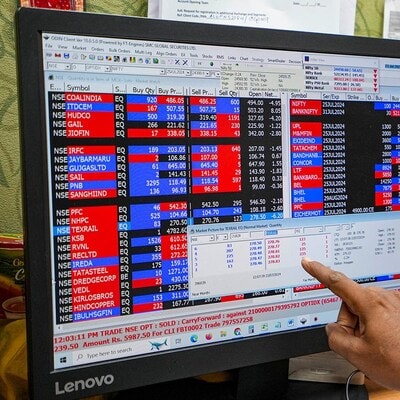Kotak report on retail investors, India stock market: The recent turmoil in the Indian stock market may not turn non-institutional investors cautious, a report by Kotak Institutional Equities said on Tuesday.
“The spate of recent negative news such as fears of a US slowdown, Israel-Iran tensions, sharp appreciation in the yen, may or may not be enough to dent the confidence of non-institutional investors in India. They have weathered more, even ignoring the most recent negative developments on the domestic front,” said Sanjeev Prasad, co-head at Kotak Institutional Equities (KIE), in a co-authored note with Anindya Bhowmik and Sunita Baldawa.
Indian non-institutional investors, including retail and high net-worth individuals, have adopted a ‘price sensitive’ approach, using every dip on the back of election results and higher capital gains tax, to increase their holding and drive the markets.
Shareholding pattern: Retail vs FII, DII
According to data from PRIME Database, the share of retail investors touched an all-time high of 7.64 per cent at the end of June, 2024, rising from 7.52 per cent as of March 31, 2024. The holding of HNI investors, however, moderated to 1.98 per cent as on June 30, 2024 from 2 per cent on March 31, 2024.
Overall, the combined retail and HNI share holding increased to 9.62 per cent at the end June this year from 9.52 per cent from March, 2024.
In fact, they sold Rs 10,073.75-crore worth of Indian shares during the August 5 meltdown.
Shareholding of domestic institutional investors (DIIs), meanwhile, has improved to 16.23 per cent, up from 16.07 per cent at the end of March 2024. This has narrowed the gap between domestic and foreign holdings to its lowest point ever.
What will retail, HNIs do now?
According to Sanjeev Prasad of Kotak, while the benchmark indices — BSE Sensex and NSE Nifty50 — appear fair from the perspective of historical multiples and bond yields, most of the non-financial Nifty-50 constituents currently trade at expensive multiples, relative to their own history.
The extent of ‘richness’ in multiples is accentuated in broader markets, across most buckets of consumption, investment and outsourcing, with financials being the only exception
Against this, analysts at the brokerage expect the persistent negative newsflow to change the investment thesis of some investors.
“They may decide to book profit in ‘narrative’ stocks where there is little valuation support. Some may want to protect high returns of the past 3-4 years, and others may simply follow others and book out,” they wrote.
More pain ahead stock markets?
On Monday, August 5, the BSE Sensex fell 2,686 points, or 3.3 per cent intraday, to hit a low of 78,296. The NSE Nifty50 also dropped below the 24,000-mark, hitting a low of 23,894, down 824 points or 3.3 per cent.
The volatility gauge, India VIX, surged 61.66 per cent intraday to reach 23.15. This was the index’s sharpest one-day gain in nine years.
Going ahead, the brokerage cautions that downside risks to FY25 earnings, from the sharper-than-expected weakness in US labor markets, a prolonged slowdown in China, and recession worries in Japan, is hardly built in the price.
“Even our conservative estimates may have downside risks, as exports and commodity oriented sectors contribute to 35 per cent of FY25 net profits of the Nifty50 Index. Furthermore, geopolitical risks have increased in recent weeks, particularly in the Middle East, which may impact oil prices, and Bangladesh, which may impact companies like Godrej Agrovet, Marico,” they said.
Stock market strategy
Analysts, thus, expect the market to rotate away from low-growth, low-quality segments toward companies with strong fundamentals and sustainable growth prospects. They suggest investors prioritise high-quality stocks with a proven track record of delivering consistent returns.
“Investors are advised to maintain a strong focus on large-cap stocks, as they tend to offer more stability and resilience, especially during periods of market volatility. However, sound mid and small-cap companies should not be overlooked either. Keep a close watch on global developments and adjust portfolios accordingly to safeguard against further downside,” said analysts at Fisdom Research.
As per their analysis, 87 per cent of the time, when investors entered the market after an equal to or more than 3 per cent fall, the market has provided positive returns in the three years following such a
decline.
Nearly 50 per cent of the time, the market delivered returns exceeding 15 per cent in the three years after such a fall, and 10 per cent of the time, the market delivered returns of more than 30 per cent in the following three years.
“Thus, despite short-term volatility, a long-term investment approach focusing on quality and growth will likely yield better results,” Fisdom said.
First Published: Aug 06 2024 | 11:22 AM IST
